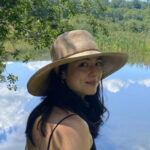Lab 3: Discovering Plate Boundaries Continuing Discussion
-
 Posted by Francesca Lingo on February 22, 2021 at 3:18 pm
Posted by Francesca Lingo on February 22, 2021 at 3:18 pmContinuing Discussion – Due on Sunday 2/28/2020 11:59 pm
Take some time to compare your boundary classifications with those provided by others in your group and begin thinking about how you could condense these into a single classification system in which each boundary is associated with a specific pattern of earthquakes, volcanoes, topography, and seafloor age (if the boundary is on the seafloor). As a group, discuss, based on your work so far, what this classification system should look like and work toward a consensus.
Note – there is no “right” answer for this activity. The goal of this activity is to encourage you to practice making and sharing observations and to become more familiar with the geologic features that occur at different plate boundaries and how these are distributed.
-
The observations suggest that boundaries can be classified by where plates are meeting with other plates. At Ocean-Continent boundaries, where plate boundaries are meeting on the coast of a continent, there is a high concentration of volcanoes and earthquakes occurring in a curvilinear pattern along the line of the boundary. At these boundaries there are often trenches in the ocean creating dramatic changes between the elevation of the land and the depth of the seafloor. Patterns in sea floor age are less consistent, but the sea floor is younger than it is at other boundaries and becomes older further away form the boundary. At Ocean-Ocean boundaries, where plate boundaries are meeting in the ocean, earthquakes are still occurring mostly along the boundary lines, but are not as dense and not directly on the boundary. The pattern for volcanoes are even less consistent with very few occurring near boundaries. The sea floor has higher elevation where the boundaries are and becomes deeper further away on both sides of the boundary. Similarly, the age of the sea floor is younger at the bounder and increases in relation to distance away from the boundary. At Continent-Continent boundaries, where plate boundaries are meeting between continents, there are very few volcanoes occurring, if any, and they are significantly spaced out on either side of the boundary. Earthquakes at these boundaries are more frequent and occur in inconsistent clustering patterns. At the continent continent boundary there is higher elevation and mountain ranges occurring at or near the boundaries.
I agree thoroughly with Natalia on the fact that after reading all the observations collected by our group on the patterns of volcanoes, earthquakes, topography, and seafloor age relative to plate boundaries, it becomes clear that there should be 3 distinct categories for our boundary classifications. Those of course being ocean-ocean, ocean-continent, and continent-continent, based on the types of crust meeting at any given boundary. This seems to be the primary indicator for what sort of geologic activity one can expect to be present at the boundary, as well as the type of topography that is to be expected.
However, after taking a second look I would think it could be beneficial to add sub-categories to each of these categories for further clarification. I think the sub-categories of divergent, convergent, and transform boundaries could make expectations of geologic activity at any given boundary even more reliable. For example, at most continent-continent convergent boundaries there is very little volcanism, but along the San Andreas fault, which is a transform boundary, there is significant amounts of volcanism even though the boundary is composed of continental crust on both sides. So perhaps this sub-categorization could prevent someone from mistakenly believing in low amounts of volcanism at all continent-continent boundaries, by knowing that specifically at continent-continent transform boundaries there may actually be quite a bit of volcanic activity.
My group and I have come up with similar observations and from our answers, it can be seen that a classification system can be based on where one plate boundary meets another plate boundary. This being, ocean-ocean, continent-continent and ocean-continent. We saw that for volcanoes, most of them occur at an ocean-continent boundary, therefore, we saw so many dots at the coastlines of those continents. Further, for earthquakes we saw that there were an abundance of them at ocean-continent boundaries while there were less at ocean-ocean boundaries. For topography and seafloor age, we were able to see patterns in relation to the plate boundaries as well. This classification system seems most fit to condense the patterns we observed.
After reading Windsor’s response, I agree that it would be clearer to add subcategories to the classification system. Adding the subcategories of divergent, convergent and transform boundaries would help explain our “unique” observations about the volcanoes, earthquakes, topography and seafloor age.
After reading my classmates observations it became more clear and I understand the reason behind the different patterns we observed. Based on the observations, I agree that the plate boundaries should be classified in the categories of ocean-continent, ocean-ocean-, and continent-continent. Within these categories we have spreading zones, transform faults, and subsections zones which explains why there is a lack of earthquakes and volcanoes along some plate boundaries. For example, I noticed that spreading zones often have earthquakes at shallow depths, earthquakes also form along transform plates in a linear pattern, subsections zones have deep ocean trenches, some mountain ranges containing volcanoes, and a few earthquakes. The classification of these plate boundaries is hard to just classify them into 3 categories, so I totally agree with Windsor and my other classmates that subcategories are necessary.
You must be logged in to reply to this topic.

